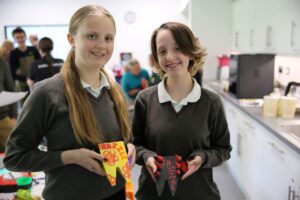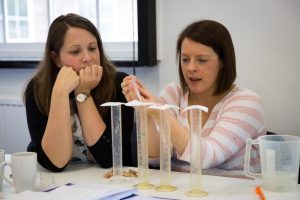Science at Cheltenham Literature Festival
Friday 9th October 2015
This week I have been at Cheltenham Literature Festival 2015, an uniquely cultured, highly-organised do where people get passionate about issues and insult each other in creative ways. Besides learning more than I ever needed to know about the tribulations of rail signalling, I also learnt about astronomy, fertility, mental health, and the Oxford University Press’ Short Introductions to just about everything. It was here where I started my journey at The Animal Kingdom with Peter Holland: a talk which included the amazing evolutionary journey of whales; mammals who, having slithered their precocious way out of the water to begin with, decided land wasn’t all it was cracked up to be, and went back in again. Did you know that Darwin censored bears? They had been in Origins of the Species to begin with as a possible common ancestor for whales, but by the second edition he had thought better of it – mostly because people laughed at him.
The Book of Spice, John O’Connell
Next I went on to The Book of Spice, where we revisited the nostalgic trauma of seed cake (caraway biscuits)and were served cardamon cake (a massive slab of which I rather regretted eating in one sitting) and asked what it was ‘spice’ really meant. John O’Connell used it to describe resins, barks and roots, but the original name comes from the Latin species, or ‘thing.’ Once, not all spice ‘things’ were considered edible – certainly not zinc oxide, a salt used to stopper weeping wounds, or mummia, made from dried ground corpses and ingested medicinally or pigmented into artistic creations.

Stargazing with Maggie Aderin-Pocock was a little dampened by the rain, but her enthusiasm wasn’t. And while the weather here on Earth might limit the luxury of stargazing, it has nothing on space weather; the unpredictable fluctuations of ‘out there’ that can smash up the satellites and telescopes we spent years designing, building and nurturing with one murderous galactic moodswing. So should we venture out there at all? The ozone layer that protects our delicate atmosphere also creates a wobbling effect that is a total pain for very high resolution telescopes. And now in the search for extraterrestrial life, we are looking further and further afield and using all kinds of wavelengths of light – not just the visible. By analysing the electromagnetic spectrum coming from distant stars, we can even work out the chemical composition of those stars, so that, when a wandering exoplanet skims across the surface, we can see how it modifies that spectrum, revealing what that planet’s atmosphere is made of, and whether it might support life.
A Miracle Pill? with broadcaster Vivienne Parry, economist Vicky Pryce, journalist Rowan Pelling, surgeon and presenter Gabriel Weston and author and journalist Bel Mooney.
Life, or the potential to create life, was the discussion topic of A Miracle Pill?, where the panelists hotly debated how science changed the choices and social pressures on women by allowing them control of their own fertility. Led on a journey from the discovery of hormones in the 1930s to a future economic liberation of women, we considered what science could and could not do for equality and why there’s a need for education in desire!
Freedom is Therapeutic? with historian John Foot, writer and mental health nurse Nathan Filer and former psychiatrist Linda Gask. Chaired by David Freeman.
The last event I attended was another panel chat called Freedom is Therapeutic?, this time on asylum reform and mental health stigma. Asylums were turned around in the ’60s, either closed down for lack of funding or reformed by mavericks like Franco Basaglia, who empowered the patients of Gorizia to shed their institution of its fences. But there are still inpatients who, despite the potentially harmful effects of long-term medications, are primarily treated with pills and expected to get better in a ‘box.’ This box also exists in society, where myths that mental health problems are not really illnesses at all, but attitudes, infiltrate our thinking and persuade sufferers to doubt their own feelings.

Ten percent less dense than water, ice is weird. Freezing top down rather than bottom up, it behaves as no other material does. Life wouldn’t be able to exist today as we know it if it wasn’t for the stability of water, and the ease with which it dissolves things. If ice formed at the bottom of the ocean, fish and other sealife would be in trouble, and if the poles melted and set as rapidly as some liquids, we would have a rapidly oscillating climate between killer extremes. Water also intereacts uniquely with the cells in our body, travelling in and out through osmosis to equalise pressure and transport vital salts and minerals. Although there are 17 known crystal structures of ice, all of them are filled with holes – these physical gaps in the structure make it less dense than liquid water. In the liquid, molecules tumble over and over each other, changing the structure every thousand millionths of a second. It is this rapid motion that means liquid water shows no ‘memory.’ For compounds that do have a memory, why not check out shape memory alloys.





